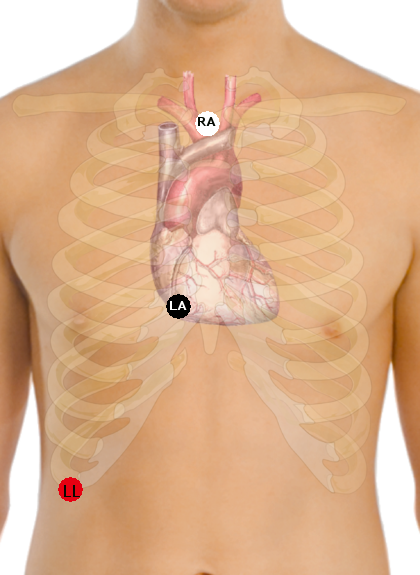Lewis lead on:
[Wikipedia]
[Google]
[Amazon]
 A Lewis Lead (also called the S5 lead) is a modified ECG lead used to detect
A Lewis Lead (also called the S5 lead) is a modified ECG lead used to detect
 A Lewis Lead (also called the S5 lead) is a modified ECG lead used to detect
A Lewis Lead (also called the S5 lead) is a modified ECG lead used to detect atrial flutter
Atrial flutter (AFL) is a common abnormal heart rhythm that starts in the atrial chambers of the heart. When it first occurs, it is usually associated with a fast heart rate and is classified as a type of supraventricular tachycardia. Atrial f ...
waves when atrial flutter is suspected clinically, based on signs and symptoms, but is not definitely demonstrated on the standard 12 lead ECG. In order to create the Lewis Lead, the right arm electrode is moved to the manubrium adjacent to the sternum
The sternum or breastbone is a long flat bone located in the central part of the chest. It connects to the ribs via cartilage and forms the front of the rib cage, thus helping to protect the heart, lungs, and major blood vessels from injury. Sha ...
. Then the left arm electrode is moved to the right, fifth intercostal space adjacent to the sternum. The left leg electrode is placed on the right lower costal margin. The Lewis Lead is then read as Lead I on the ECG and, since in most patients it will be roughly perpendicular to the wave of ventricular depolarization
In biology, depolarization or hypopolarization is a change within a cell, during which the cell undergoes a shift in electric charge distribution, resulting in less negative charge inside the cell compared to the outside. Depolarization is ess ...
, atrial flutter waves may be more apparent.
References
* Goldman's ''Principles of Clinical Electrocardiography'' 1982 Cardiology Electrodiagnosis Cardiac electrophysiology {{med-diagnostic-stub